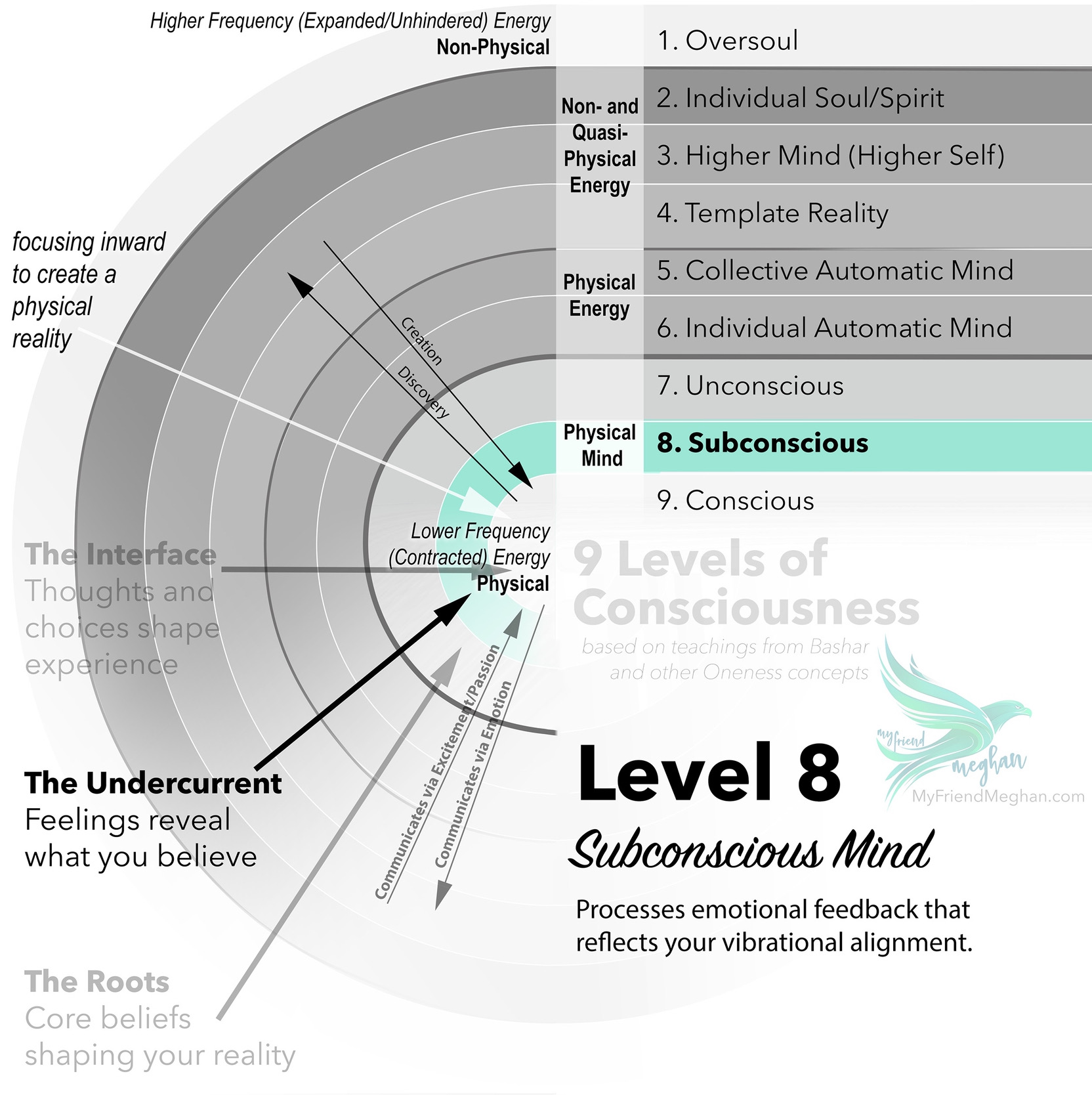Some emotions feel louder than others—unexpected sadness, sudden rage, simmering shame. Sometimes we understand where they’re coming from. But more often, we don’t—because emotion arises deeper than conscious thought. It begins in the Subconscious, where our energetic responses reflect the beliefs rooted in the Unconscious Mind.
If the unconscious (Level 7) houses our core assumptions, the subconscious is where those beliefs are felt. Emotion is how belief becomes experience. It gives energy a voice.
Emotions as Vibrational Messengers
Each emotional state reflects an internal frequency—like a vibrational signature tied to what we (often unknowingly) believe. For example, if the unconscious holds the belief “I’m unlovable,” the subconscious might generate feelings of self-hatred, hopelessness, or despair. If we carry the belief “I have to earn my worth,” we may feel panic, anxiety, or guilt when we rest.
In this way, emotion is data. It reveals our vibrational state in the moment, and points toward what needs our attention. Not because it’s “bad,” but because it’s trying to tell us something. When we view emotions as indicators—not enemies—they become powerful tools for healing and transformation, and we can elevate our thought with intention.
A Two-Way Communication Loop
Our subconscious doesn’t operate in isolation. It’s part of a living feedback system—one that connects us with our Higher Mind (Level 3), which exists outside of time and offers guidance from a broader perspective.
Here’s how the loop works:
- The Higher Mind sends energetic nudges downward—intuitive hits, bursts of excitement, passion, or clarity.
- The Subconscious receives these and responds with emotional resonance—or resistance.
- That emotional information travels back upward via our Conscious Mind and actions, informing the Higher Mind of the body’s current state and readiness.
In this loop, emotion becomes the language of alignment. When our emotions feel expansive and clear, it suggests we’re in tune with our true path. When they feel constricted or overwhelming, it’s an invitation to pause and explore the belief underneath. This is the core idea behind living intentionally.
Separate—but Intertwined—with Belief
It’s easy to conflate the Unconscious and Subconscious because they’re so closely linked. But in this model, they serve distinct purposes:
- The Unconscious shapes the structure: the root beliefs that define our reality.
- The Subconscious carries the charge: the emotional energy that lets us feel how those beliefs are playing out.
We can’t shift what we can’t feel. That’s why emotional awareness is such a key part of growth.
In Closing
The Subconscious is your inner sensor array—a vibrational interface between belief and behavior. By listening to what your emotions are really pointing to, you gain access to the deeper story playing out within you. And in doing so, you create space to choose again—not just how you feel, but how you respond, realign, and evolve.
Actionable Insights
- Notice the emotional signal beneath the surface. When something triggers a strong emotional response, pause. What might this feeling be pointing to underneath—what belief, what expectation, what fear?
- Treat emotions as messengers, not dictators. You don’t have to become what you feel. Instead, use emotion as a vibrational compass. Ask: What is this showing me? Where am I being invited to shift?
Note: In many spiritual and psychological models, the subconscious and unconscious are treated as interchangeable, and emotions may be seen as arising from either. In this model, they are distinct levels with specific roles: the Unconscious holds core beliefs, while the Subconscious processes and expresses the emotional resonance of those beliefs. Emotion isn’t generated by surface thoughts—it emerges from deeper energetic patterns, offering a vibrational reflection of our inner state.


Leave a Reply